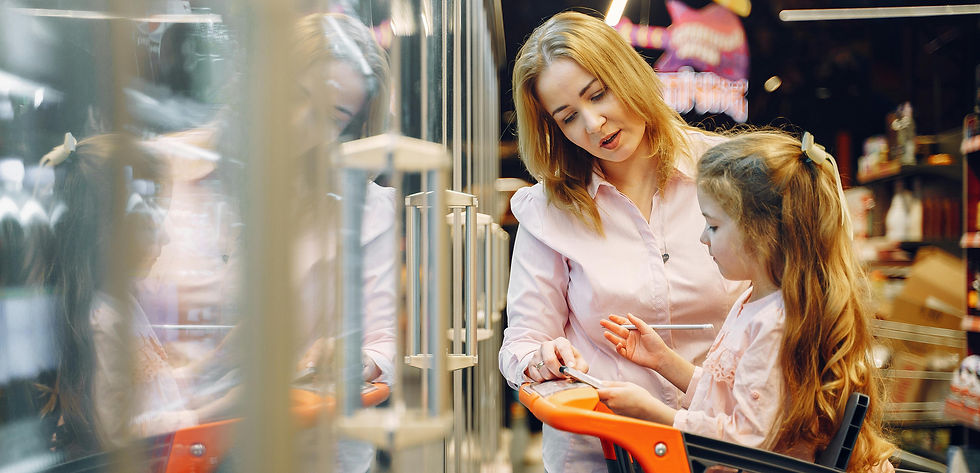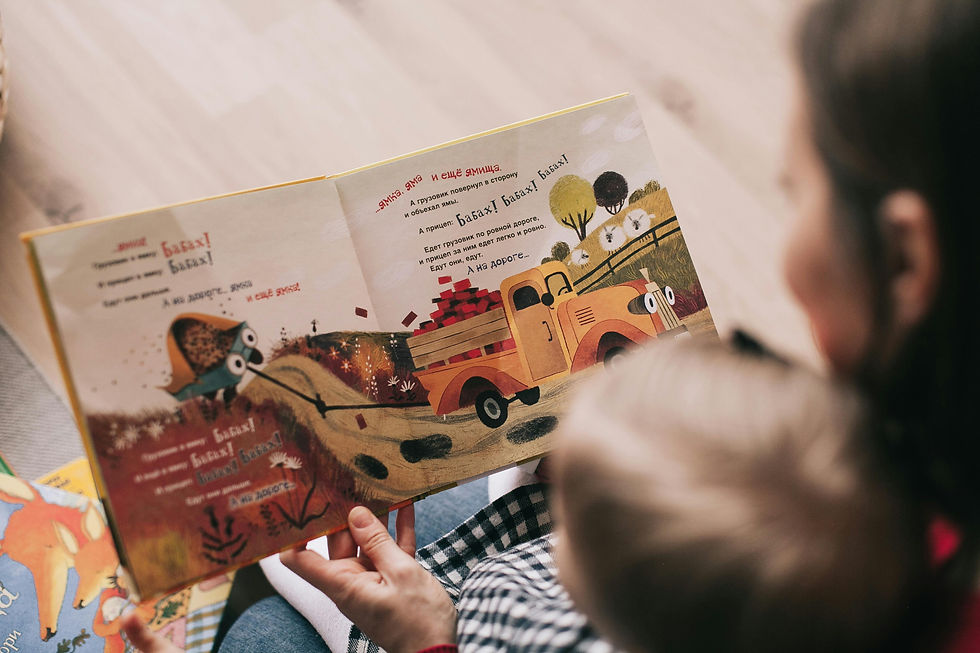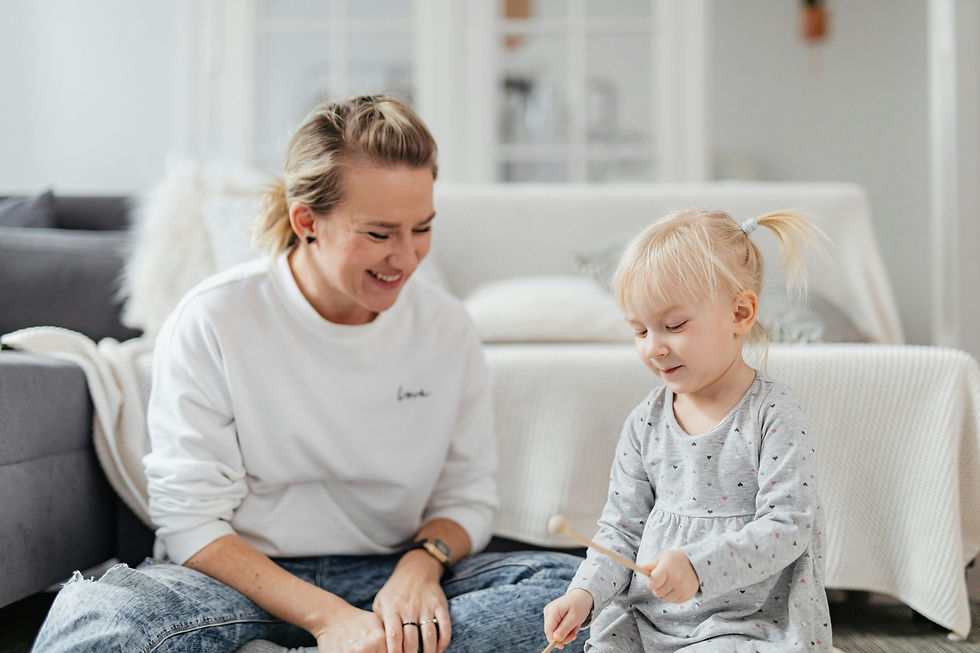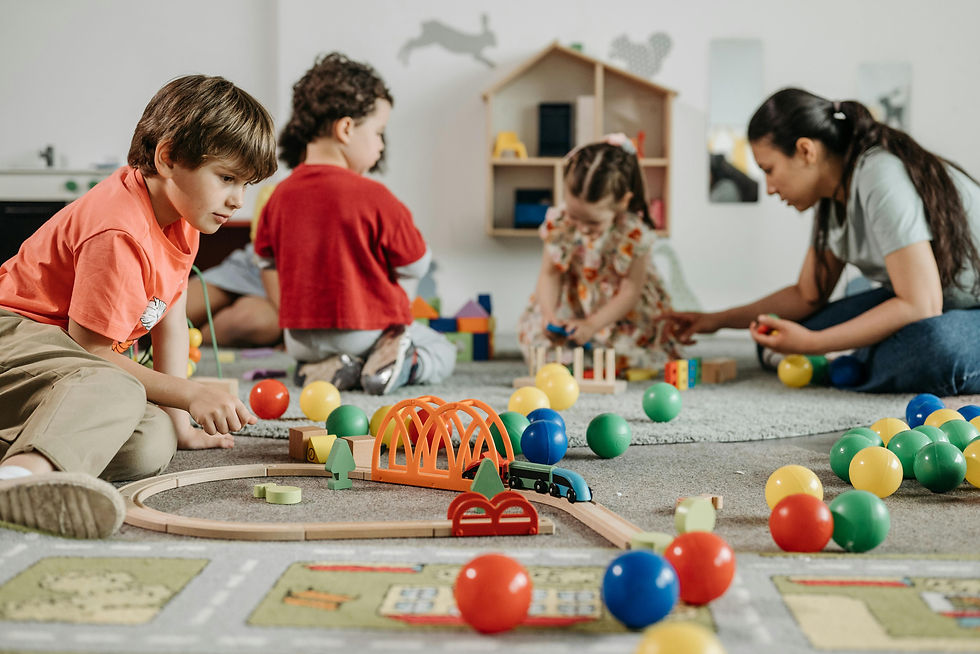How to support my toddler’s language development
- Staff
- Jul 24
- 2 min read
How to support my toddler’s language development is one of the most common questions parents ask as their little one starts exploring words. From first sounds to full sentences, there are simple, fun ways you can nurture their communication skills every day through play, reading, and connection.
1. Talk to them all the time
Narrate what you’re doing as you go about your day.

“We’re putting on your shoes. Now we’re going outside. Look at the big green tree!”
The more words they hear, the more their little brain connects sounds, meanings, and expressions.
2. Read, read, and read some more

Reading is one of the most powerful ways to boost language. Choose simple board books with bright pictures and repetitive words. Point to objects, ask questions, and let them turn the pages, even if they can’t follow the story perfectly yet.
3. Sing and rhyme together

Songs and rhymes make words fun and memorable. Try classics like Twinkle Twinkle Little Star or simple finger plays like Itsy Bitsy Spider. Repetition in music helps toddlers absorb sounds and patterns.
4. Pause and let them respond

When you talk, give them time to answer, even if it’s just a gesture or a sound. This helps them understand that communication is a two-way street.
5. Avoid correcting too much

If they say “I goed to the park”, just model the right way: “Yes, you went to the park!” Gentle modeling encourages learning without pressure.
6. Encourage playdates and group activities

Being around other children gives toddlers a reason to practice their words, share, and imitate new expressions. Group classes and play sessions also introduce new vocabulary naturally.
7. Limit screen time and replace it with real interaction

Conversations, songs, and books are far more effective than passive screen watching. If you use educational videos, watch with your child and talk about what you see together.
When should you seek extra support?
Every child develops at their own pace, but if by age 2 your toddler has very few words or struggles to communicate basic needs, talk to your pediatrician or a speech therapist for guidance.

Supporting your toddler’s language development doesn’t have to be complicated, it’s all about creating meaningful, fun, and engaging interactions every day. Talk, read, sing, play, and most importantly, enjoy this beautiful phase of growth.
Want more tips like this? Join our parent community or visit Children’s Club House for interactive play sessions that boost learning through fun!



Comments